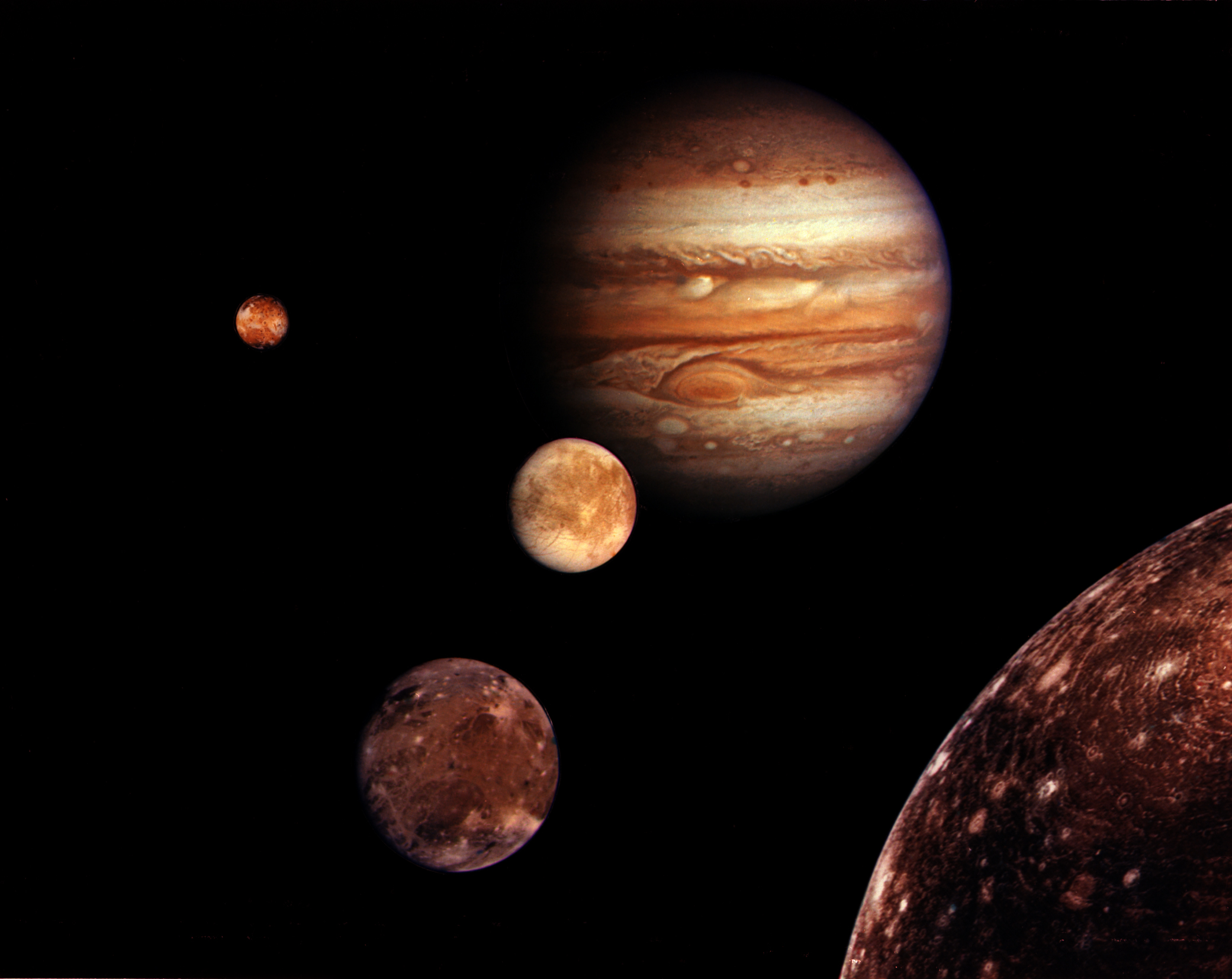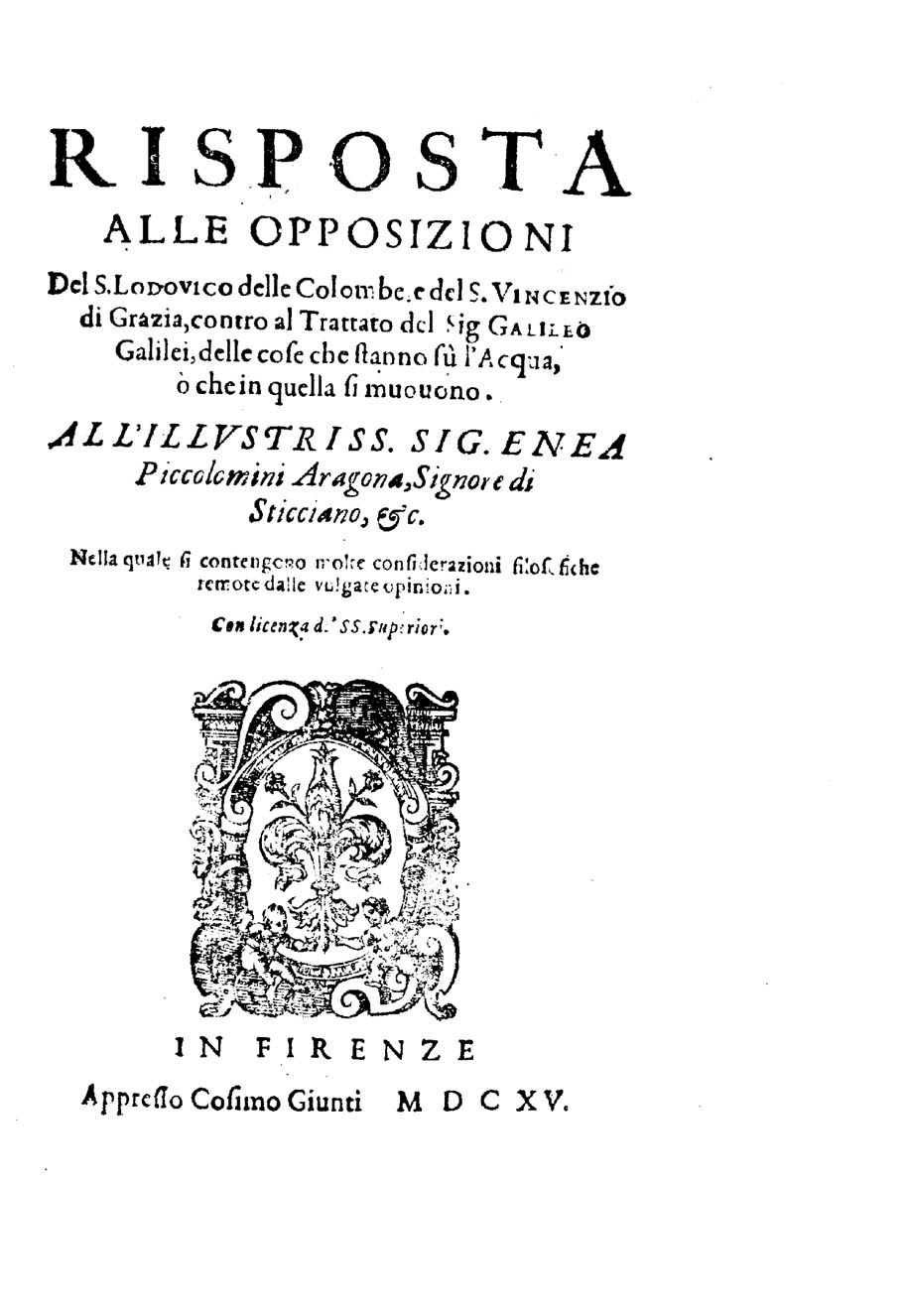|
Niccolò Lorini
Niccolò Lorini was born in Florence in 1544. He served as a Preacher General Dominican Order and a lecturer in ecclesiastical history at the University of Florence. He is most famous for his involvement in the Galileo trails, the Galileo affair. He was a member of the Pigeon League named for one of Galileo's rivals, Lodovico delle Colombe. Lorini instigated the events of 1616 by sending the Roman Inquisition a copy of Galileo's letter to Benedetto Castelli. See also *''Letter to Benedetto Castelli Galileo Galilei's Letter to Benedetto Castelli (1613) was his first statement on the authority of scripture and the Catholic Church in matters of scientific enquiry. In a series of bold and innovative arguments, he undermined the claims for Biblica ...'' References 1544 births Academic staff of the University of Florence {{italy-historian-stub ... [...More Info...] [...Related Items...] OR: [Wikipedia] [Google] [Baidu] |
University Of Florence
The University of Florence ( Italian: ''Università degli Studi di Firenze'', UniFI) is an Italian public research university located in Florence, Italy. It comprises 12 schools and has around 50,000 students enrolled. History The first university in Florence was the Studium Generale, which was established by the Florentine Republic in 1321. The Studium was recognized by Pope Clement VI in 1349, and authorized to grant regular degrees. The Pope also established that the first Italian faculty of theology would be in Florence. The Studium became an imperial university in 1364, but was moved to Pisa in 1473 when Lorenzo the Magnificent gained control of Florence. Charles VIII moved it back from 1497 to 1515, but it was moved to Pisa again when the Medici family returned to power. The modern university dates from 1859, when a group of disparate higher-studies institutions grouped together in the Istituto di Studi Pratici e di Perfezionamento, which a year later was recognized ... [...More Info...] [...Related Items...] OR: [Wikipedia] [Google] [Baidu] |
Galileo Affair
The Galileo affair ( it, il processo a Galileo Galilei) began around 1610 and culminated with the trial and condemnation of Galileo Galilei by the Roman Catholic Inquisition in 1633. Galileo was prosecuted for his support of heliocentrism, the astronomical model in which the Earth and planets revolve around the Sun at the centre of the universe. In 1610, Galileo published his '' Sidereus Nuncius'' (''Starry Messenger''), describing the observations that he had made with his new, much stronger telescope, amongst them, the Galilean moons of Jupiter. With these observations and additional observations that followed, such as the phases of Venus, he promoted the heliocentric theory of Nicolaus Copernicus published in '' De revolutionibus orbium coelestium'' in 1543. Galileo's discoveries were met with opposition within the Catholic Church, and in 1616 the Inquisition declared heliocentrism to be "formally heretical." Galileo went on to propose a theory of tides in 1616, and of ... [...More Info...] [...Related Items...] OR: [Wikipedia] [Google] [Baidu] |
Lodovico Delle Colombe
Lodovico delle Colombe (1565(?) – after 1623) was an Italian Aristotelian scholar, famous for his battles with Galileo Galilei in a series of controversies in physics and astronomy. Early life Delle Colombe was born in Florence in the second half of the 16th century. A date of January 20, 1565 has been suggested, but the source for this is unknown. Likewise nothing is known of his family, except that he was of noble origin, or of his education. He became a member of the Accademia Fiorentina when Francesco Nori was its consul and was also a member of the Consiglio dei Dugento, the advisory body to the Grand Duchy of Tuscany. He was said to be tall and very thin with a long white beard, a little bald head and sunken eyes. He wore a fleece jacket and a large collar. Because of his appearance and his lonely and melancholy character he was nicknamed 'the Superintendent of Limbo' by the satirical poet Francesco Ruspoli. One of his brothers, Raffaello delle Colombe (1557–1627), wa ... [...More Info...] [...Related Items...] OR: [Wikipedia] [Google] [Baidu] |
Roman Inquisition
The Roman Inquisition, formally the Supreme Sacred Congregation of the Roman and Universal Inquisition, was a system of partisan tribunals developed by the Holy See of the Roman Catholic Church, during the second half of the 16th century, responsible for prosecuting individuals accused of a wide array of crimes according to Roman Catholic law and doctrine, relating to catholic religious life or alternative religious or secular beliefs. It was established in 1542 by the leader of the Roman Catholic Church, Pope The pope ( la, papa, from el, πάππας, translit=pappas, 'father'), also known as supreme pontiff ( or ), Roman pontiff () or sovereign pontiff, is the bishop of Rome (or historically the patriarch of Rome), head of the worldwide Cathol ... Paul III. In the period after the Medieval Inquisition, it was one of three different manifestations of the wider Inquisition, Catholic Inquisition along with the Spanish Inquisition and Portuguese Inquisition. Function and ... [...More Info...] [...Related Items...] OR: [Wikipedia] [Google] [Baidu] |
Benedetto Castelli
Benedetto Castelli (1578 – 9 April 1643), born Antonio Castelli, was an Italian mathematician. Benedetto was his name in religion on entering the Benedictine Order in 1595. Life Born in Brescia, Castelli studied at the University of Padua and later became an abbot at the Benedictine monastery in Monte Cassino. He was a long-time friend and supporter of his teacher, Galileo Galilei, and in turn teacher to Galileo's son. He assisted Galileo's study of sunspots and participated in the examination of the theories of Nicolaus Copernicus. Castelli was interested in mathematics and hydraulics. He was appointed as a mathematician to the University of Pisa, replacing Galileo, and later at the University of Rome La Sapienza. Castelli introduced Bonaventura Cavalieri to Galileo, leading to an extensive correspondence between the latter; Galileo was instrumental in procuring a position for Cavalieri at the University of Bologna in 1629. Castelli was involved in the discovery of the ph ... [...More Info...] [...Related Items...] OR: [Wikipedia] [Google] [Baidu] |
Letter To Benedetto Castelli
Galileo Galilei's Letter to Benedetto Castelli (1613) was his first statement on the authority of scripture and the Catholic Church in matters of scientific enquiry. In a series of bold and innovative arguments, he undermined the claims for Biblical authority which the opponents of Copernicus used. The letter was the subject of the first complaint about Galileo to the Inquisition in 1615. Background In 1610 Galileo had published ''Sidereus Nuncius'' (''The Starry Messenger''), which made him famous across Europe. This work prompted many debates as to whether the Earth really was the centre of the universe. Galileo usually avoided referring to scripture in his arguments about the universe, while the Aristotelian scholars who opposed Copernicus cited the Bible in support of their views – for example Lodovico delle Colombe in his 1611 work ''Contra il Moto della Terra'' (''Against the Motion of the Earth'') explicitly challenged anyone defending Copernicus to answer the charge that ... [...More Info...] [...Related Items...] OR: [Wikipedia] [Google] [Baidu] |
1544 Births
__NOTOC__ Events January–June * January 13 – At Västerås, the estates of Sweden swear loyalty to King Gustav Vasa and to his heirs, ending the traditional electoral monarchy in Sweden. Gustav subsequently signs an alliance with the Kingdom of France The Kingdom of France ( fro, Reaume de France; frm, Royaulme de France; french: link=yes, Royaume de France) is the historiographical name or umbrella term given to various political entities of France in the medieval and early modern period .... * February 20 – The Diet of Speyer (1544), Fourth Diet of Speyer is convened. * April 11 – Battle of Ceresole: Kingdom of France, French forces under the Comte d'Enghien defeat forces of the Holy Roman Empire, under the Marques Del Vasto, near Turin. * May – Charles V, Holy Roman Emperor, again invades eastern France. * May 3 – Edward Seymour, 1st Duke of Somerset, Edward Seymour, Earl of Hertford, with an Kingdom of England, English arm ... [...More Info...] [...Related Items...] OR: [Wikipedia] [Google] [Baidu] |



